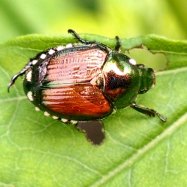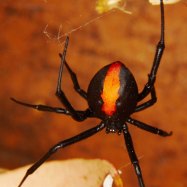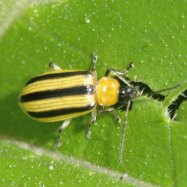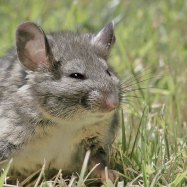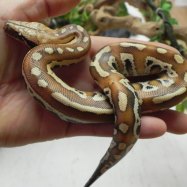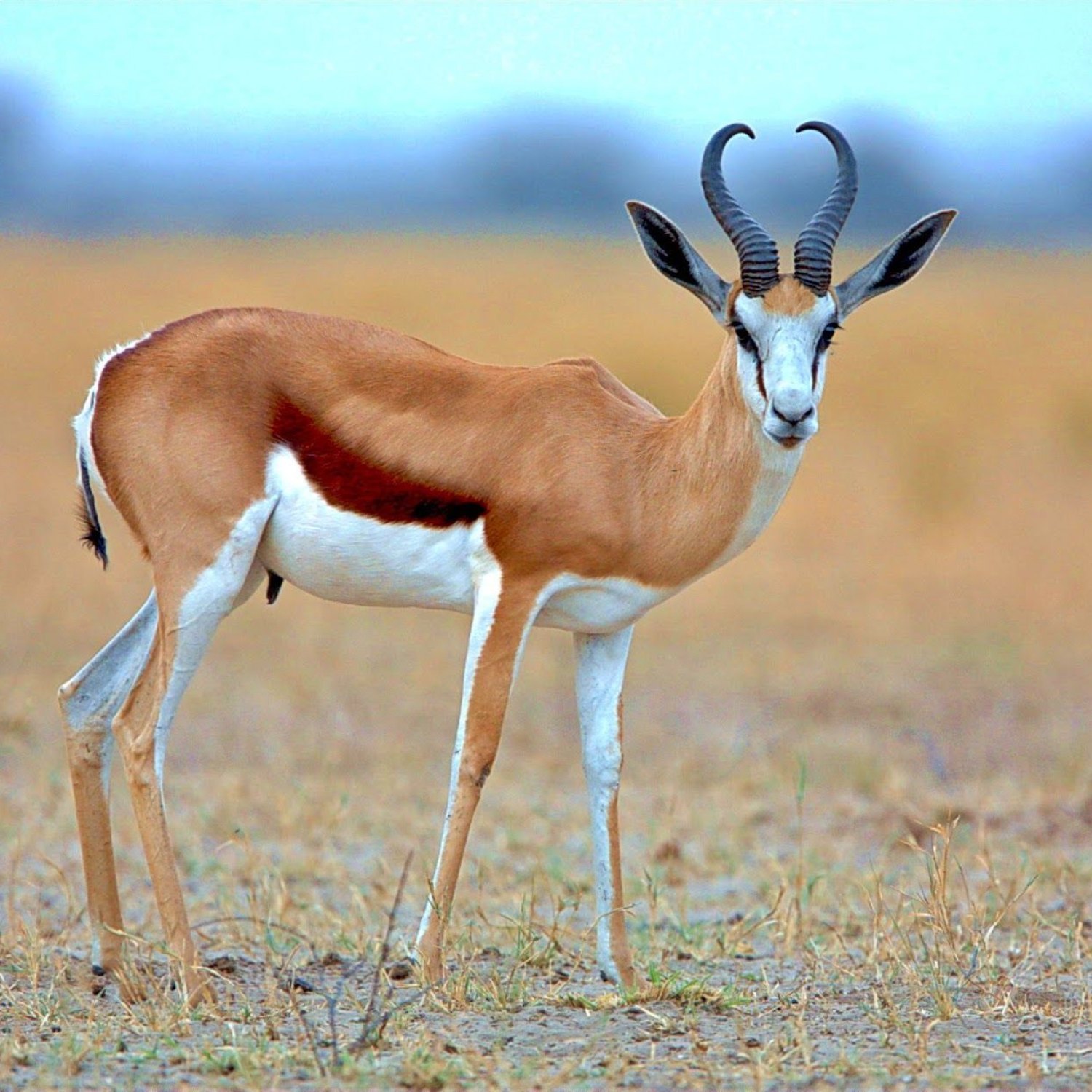
Springbok
120-150 cm
Springboks are graceful and fast-running antelopes, native to open plains and semi-deserts. They belong to the Bovidae family and can reach a length of 120-150 cm. With their distinct white and brown markings, they are a sight to behold. These medium-sized herbivores are vital to the ecosystems they inhabit and are known for their impressive leaping abilities. #Springbok #Antelope #Wildlife
Animal Details Summary:
Common Name: Springbok
Kingdom: Animalia
Habitat: Grasslands, Savannas
Surviving the Harsh Savannas: The Fascinating Springbok of Southern Africa
The African continent is home to a diverse range of wildlife, with each species showcasing unique adaptations to survive in their respective environments. In southern Africa, there is a remarkable mammal that has captured the attention of nature enthusiasts and scientists alike – the Springbok (Antidorcas marsupialis). This medium-sized antelope boasts an array of stunning characteristics, making it a fascinating animal to study. From its distinctive appearance to its intricate behavior, the Springbok has truly earned its place among the African savanna's most iconic animals Springbok.The Springbok is a member of the Animalia kingdom, Chordata phylum, and Mammalia class, placing it among some of the most advanced animals on earth. The species belongs to the Artiodactyla order and Bovidae family, which also includes other well-known animals such as buffalo, goats, and sheep. Found predominantly in southern Africa, the Springbok is endemic to the region, meaning they are not found anywhere else in the world.
These highly adaptable animals are most commonly found in grasslands and savannas, making use of open plains and semi-deserts as their primary habitat. They are able to thrive in a variety of environments, from mountainous areas to dry, flat bushveld regions. Their feeding method is that of a herbivore, grazing on a variety of grasses and plants. Despite being a popular prey for carnivores, the Springbok has developed remarkable defense mechanisms that have helped them survive and thrive in the harsh African savannas.
The Springbok is a popular animal, known for its striking coloration and impressive speed. Its scientific name, Antidorcas marsupialis, derives from the Greek words "anti" meaning "opposite" and "dorcas" meaning "gazelle Scissor Tailed Flycatcher." This is a fitting name for the Springbok, as it exhibits characteristics of both gazelles and antelopes. The word "marsupialis" refers to the species' unique pouch-like extensions on the sides of their hindlegs, used to store fat.
One of the most distinctive features of the Springbok is its coat coloration. They have a light brown to reddish-brown fur on their back, neck, and sides, with a white underbelly. This coloration is crucial for camouflage, as it allows the animal to blend in seamlessly with its surroundings. The white patch on their rump is also a unique characteristic, used as a visual signal during courtship and territorial disputes. When the Springbok is startled or excited, they display an impressive maneuver, known as "pronking." This involves jumping straight up into the air, showing off their white underbelly and patch, effectively warning other animals of potential danger.
In terms of body shape, the Springbok has adapted well to its environment. They have a slender, medium-sized build, with slender legs that allow them to run at high speeds. Adult Springboks can grow up to 150cm in length and reach a weight of up to 40kg. Their small head and elongated snout are also well-adapted for grazing on low-lying vegetation. One might mistake them for a domesticated goat or sheep, but their agility and grace are a testament to their wild nature.
The geographical distribution of the Springbok is limited to southern Africa, specifically Namibia and South Africa. These countries boast vast grasslands and semi-desert areas, making them ideal habitats for the species. Due to their excellent adaptability and resilience, the Springbok has been successfully introduced to other parts of Africa and even to countries such as Argentina, Australia, and New Zealand.
The Springbok's survival instincts are truly impressive, considering the harsh conditions that they face in their natural habitat. They are often the target of predators such as lions, cheetahs, and leopards. However, these antelopes have found ways to outsmart and outrun their predators, making them a tough prey to catch. Springboks have excellent eyesight, allowing them to spot potential dangers from a distance, and their agility enables them to change direction quickly when required. They also have a unique anti-predator mechanism called stotting or "pronking." This behavior confuses predators by making it difficult to determine which animal they will pursue, as all the Springboks are jumping simultaneously.
In addition to their impressive defense mechanisms, Springboks also have other adaptations that help them survive in the harsh African savannas. For example, their diet mainly consists of grasses and succulent leaves, which provide them with the necessary nutrients and water to survive in the arid environment. They also have a special digestive system that allows them to extract moisture from their food, reducing their need for water.
Despite living in a food-scarce environment, Springboks have a unique reproductive strategy that ensures their survival. During the breeding season, males engage in fierce battles to establish dominance and secure a harem of females. Females give birth to a single offspring each year, and the newborns are kept hidden for the first few weeks of their lives, as they are vulnerable to predators. When the offspring is old enough, it joins a group of juveniles and continues to develop its survival skills within the safety of the herd.
In recent years, the Springbok's population has faced several challenges, with habitat loss and illegal hunting being the primary threats. To address this, governments, conservation organizations, and local communities have implemented various measures to protect this iconic species. These include strict regulations on hunting, educating communities on the importance of conservation, and creating protected areas for the Springbok to thrive.
In conclusion, the Springbok is a remarkable animal that has adapted well to the harsh conditions of the African savannas. From its impressive coloration to its unique stotting behavior, the Springbok continues to captivate and fascinate nature lovers worldwide. As we continue to learn more about these majestic creatures, it is essential to strive for the conservation and protection of their natural habitat to ensure their survival for generations to come. The Springbok is an integral part of the African savanna ecosystem, and it is our responsibility to ensure that they continue to roam freely in their native lands.

Springbok
Animal Details Springbok - Scientific Name: Antidorcas marsupialis
- Category: Animals S
- Scientific Name: Antidorcas marsupialis
- Common Name: Springbok
- Kingdom: Animalia
- Phylum: Chordata
- Class: Mammalia
- Order: Artiodactyla
- Family: Bovidae
- Habitat: Grasslands, Savannas
- Feeding Method: Herbivore
- Geographical Distribution: Southern Africa
- Country of Origin: Namibia, South Africa
- Location: Open plains and semi-deserts
- Animal Coloration: Brown and white
- Body Shape: Medium-sized antelope
- Length: 120-150 cm
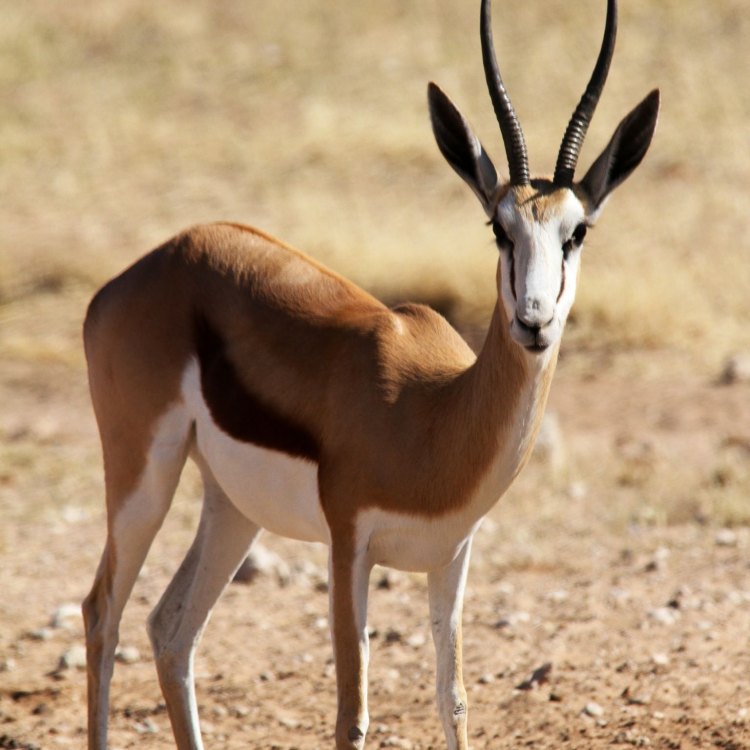
Springbok
- Adult Size: 70-100 cm (shoulder height)
- Average Lifespan: 10-12 years
- Reproduction: Sexual
- Reproductive Behavior: Polygynous
- Sound or Call: Loud, repeated snorts
- Migration Pattern: Migratory
- Social Groups: Groups of 10-100 individuals
- Behavior: Highly social and gregarious
- Threats: Hunting, habitat loss, predation
- Conservation Status: Least Concern
- Impact on Ecosystem: Key grazers in the ecosystem
- Human Use: Hunting, ecotourism
- Distinctive Features: Pronounced black stripe on each side
- Interesting Facts: Can leap up to 13 feet in the air
- Predator: Lions, cheetahs, leopards
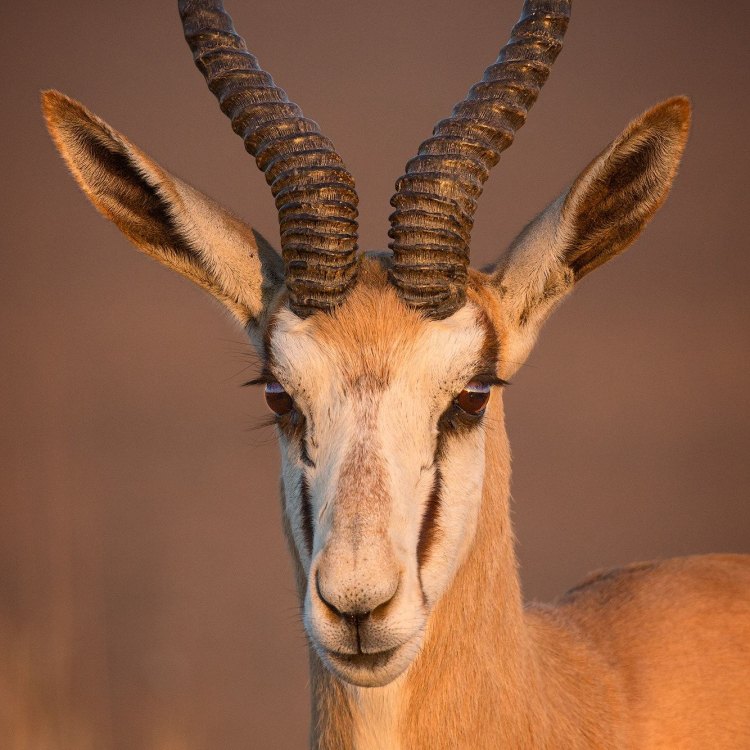
Antidorcas marsupialis
The Fascinating Springbok: A Key Player in the African Ecosystem
The vast African savannas are home to a variety of magnificent creatures, from the mighty lions and elephants to the graceful giraffes and zebras. But one animal that often goes unnoticed amidst the splendor of its larger counterparts is the Springbok. This unique and distinctive antelope, commonly found in the southern African plains, holds significant importance in the ecosystem and has captivated the attention of many wildlife enthusiasts.The Springbok, scientifically known as Antidorcas marsupialis, is a medium-sized antelope with a striking appearance PeaceOfAnimals.Com. Its name comes from its impressive ability to jump up to 13 feet in the air, making it one of the most agile and athletic animals in the world. Its physical attributes are not the only intriguing aspect of this species; its behavior, threats, and conservation status make it a fascinating subject to explore.
Adult Springboks typically measure around 70-100 cm in height at the shoulder and can weigh up to 60 kg. They have a slender and muscular build, with a sandy brown coat on the upper body and a white belly. Their most distinctive feature is the pronounced black stripe running along each side, from the shoulders to the hind legs. This stripe is a unique adaptation that helps them blend into their surroundings and avoid predators.
The lifespan of a Springbok ranges from 10-12 years in the wild, with both males and females reaching sexual maturity at around 1-2 years old. Reproduction in Springboks is sexual, and males engage in fierce battles during the breeding season to establish dominance and secure a harem of females. This behavior is known as polygyny, where one male mates with multiple females Sand Tiger Shark.
Springboks are highly social and gregarious animals, usually forming groups of 10-100 individuals. These groups, also known as "herds," are made up of females and their young, with a few dominant males. These herds are essential for the survival of Springboks as they provide protection against predators and help with finding food and water. During the wet season, these herds can become even larger as they merge with other herds to form massive moving groups of thousands of Springboks.
One of the most distinct features of Springboks is their loud, repeated snorts. These snorts are used as a form of communication within the herd, signaling danger or distress. They are also known to use various vocalizations, such as loud grunts and barks, to communicate with each other.
Springboks are migratory animals, and their nomadic lifestyle is incredibly intriguing. During the dry season, when food and water are scarce, they embark on long-distance migrations in search of greener pastures. These migrations can cover hundreds of kilometers, and it is not uncommon for them to cross international borders, making them true wanderers of the African plains.
Apart from their crucial role in keeping the savanna ecosystem in balance, Springboks have also been an integral part of human society for centuries. Historically, they were hunted for their meat and hides by indigenous tribes in Africa. In modern times, they are still hunted, but their main threat comes from habitat loss and poaching. The destruction of their natural habitat by human activities, such as farming and urbanization, has forced Springboks to adapt to new environments and compete with livestock for resources.
However, amidst all the challenges they face, the Springbok's conservation status is currently listed as Least Concern by the International Union for Conservation of Nature (IUCN). This is due to their relatively large population and wide distribution in southern Africa. Governments and conservation organizations have placed strict regulations on hunting and poaching, and their numbers have seen a steady increase in recent years.
The importance of Springboks in the African savanna cannot be overstated. As key grazers, they play a significant role in maintaining the balance of the ecosystem. By grazing on the grass and shrubs, they help prevent the overgrowth of vegetation and reduce the risk of wildfires. Their droppings also fertilize the soil, creating healthier and more diverse habitats for other animals.
Moreover, Springboks are a significant source of income through ecotourism, as they are a popular species amongst nature lovers and wildlife photographers. Their graceful movements and impressive leaps attract visitors from all over the world, providing local communities with opportunities for employment and economic growth.
In conclusion, the Springbok may not be as prominent as the "Big Five" in the African savanna, but its unique characteristics and essential role in the ecosystem make it a remarkable species worth learning about. From their pronounced black stripes and impressive jumping abilities to their highly social behavior and migratory patterns, Springboks are truly fascinating creatures. And with continued efforts towards conservation and protection, we can ensure that these beautiful animals continue to thrive in their natural habitat.
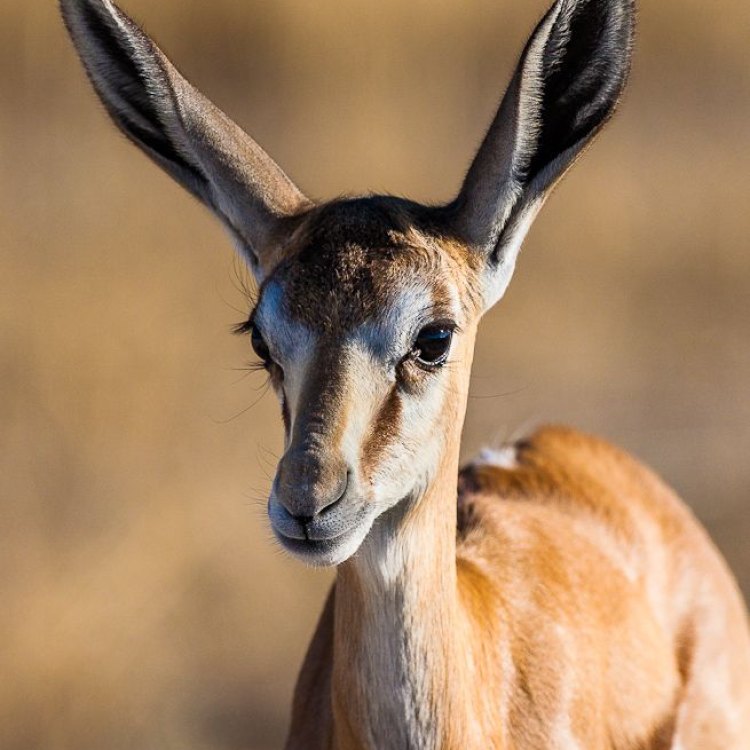
Surviving the Harsh Savannas: The Fascinating Springbok of Southern Africa
Disclaimer: The content provided is for informational purposes only. We cannot guarantee the accuracy of the information on this page 100%. All information provided here may change without prior notice.

